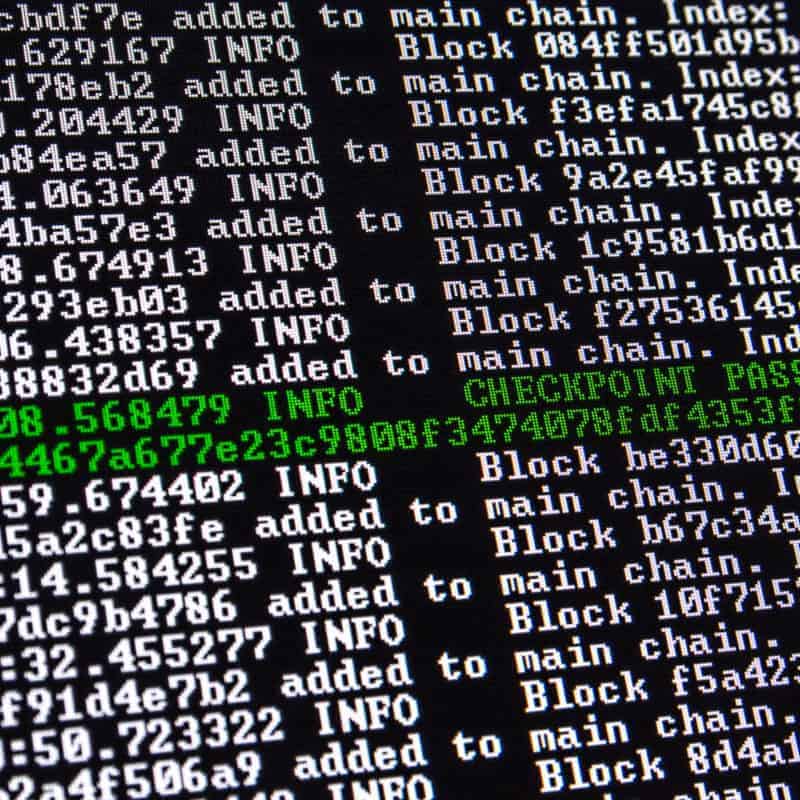The hash is one of the main building blocks underlying blockchain technology. That’s why you need to understand hashing and its related concepts—things like hash rate and function. This guide will walk you through the fundamentals.
What is a Hash?
It’s the process of taking any input data and running it through an algorithm that then produces output data of a specific and consistent size.
The output data is a hash. The algorithm used in the process is called a hash function. And finally, the rate at which you can push data through the hash function to generate a new hash is your hash rate.
All of this is crucial to blockchain technology. In large part, it’s what gives blockchain many of its unique properties.
How It Works

Example of connected blockchain blocks. Burgess Powell/Blocklr.
Essentially, a blockchain is built by constantly adding new data to an ever-expanding list. More specifically, when you’re processing a new batch of transactions, you begin by building on top of the data from the previous batch of transactions.
You then run the whole thing through the hash function to generate a new one. The network then adds that new output to the block. And the next batch of transactions begins on top of the newest one that you just generated.
You Can Input Anything
Importantly, you can input any conceivable string of letters and numbers into a hash function and the algorithm will give you hashes that are always the same size as one another. This makes it easy and quick to verify any given one. At the same time, it’s virtually impossible to figure out what the input was.
This also provides security. That’s because even the slightest change in any input data will produce a dramatically different output, which will then have a domino effect throughout the rest of the blockchain. Basically, it makes it impossible to tamper with any data.
Computing Power Matters
These calculations require immense computing power since you’re processing so much data. The rate at which you can generate a new piece of output data is your hash rate.
An individual cryptocurrency miner’s rate is tied directly to their computing potential. For example, using a basic PC would give you a very slow rate. So slow, in fact, that you wouldn’t be able to move fast enough to ever mine any coins.
On the other hand, a powerful ASIC would give you a much higher rate and a better shot at successful mining.
They also apply to a cryptocurrency’s entire network. For example, Bitcoin (BTC) has an estimated rate for the entire network. In this case, it’s basically the aggregate speed at which all miners everywhere are generating new ones. This has a direct impact on how quickly miners can produce a new currency within that crypto’s economy.
Effect on Mining

Example of cryptocurrency wallet and blockchain synchronization. Jarrow888/Shutterstock.
When you mine cryptocurrency, you’re basically looking for some predefined hash that will solve a complex “puzzle.” And whoever finds that magical hash completes the block and is rewarded with currency.
It follows that the faster you can rip through these algorithms, the better your chances of finding the correct one and earning the reward. This is why in the early days of Bitcoin, people started forming mining pools. They upped their collective processing power and made more money.
Energy consumption is the downside. More computing power means a higher rate and the potential for better profits. But it also requires more energy. And the costs of that energy offset part of your profits. This is why miners must weigh out the cost of maintaining a high rate against how much they expect to make from mining.
More and More Computation
Hashing has important security and decentralizing features. As crypto becomes more popular and more miners join in, hash rates are steadily climbing. And often, that trend holds steady even when a currency’s value drops. How these two will begin affecting each other in the future remains to be seen.

